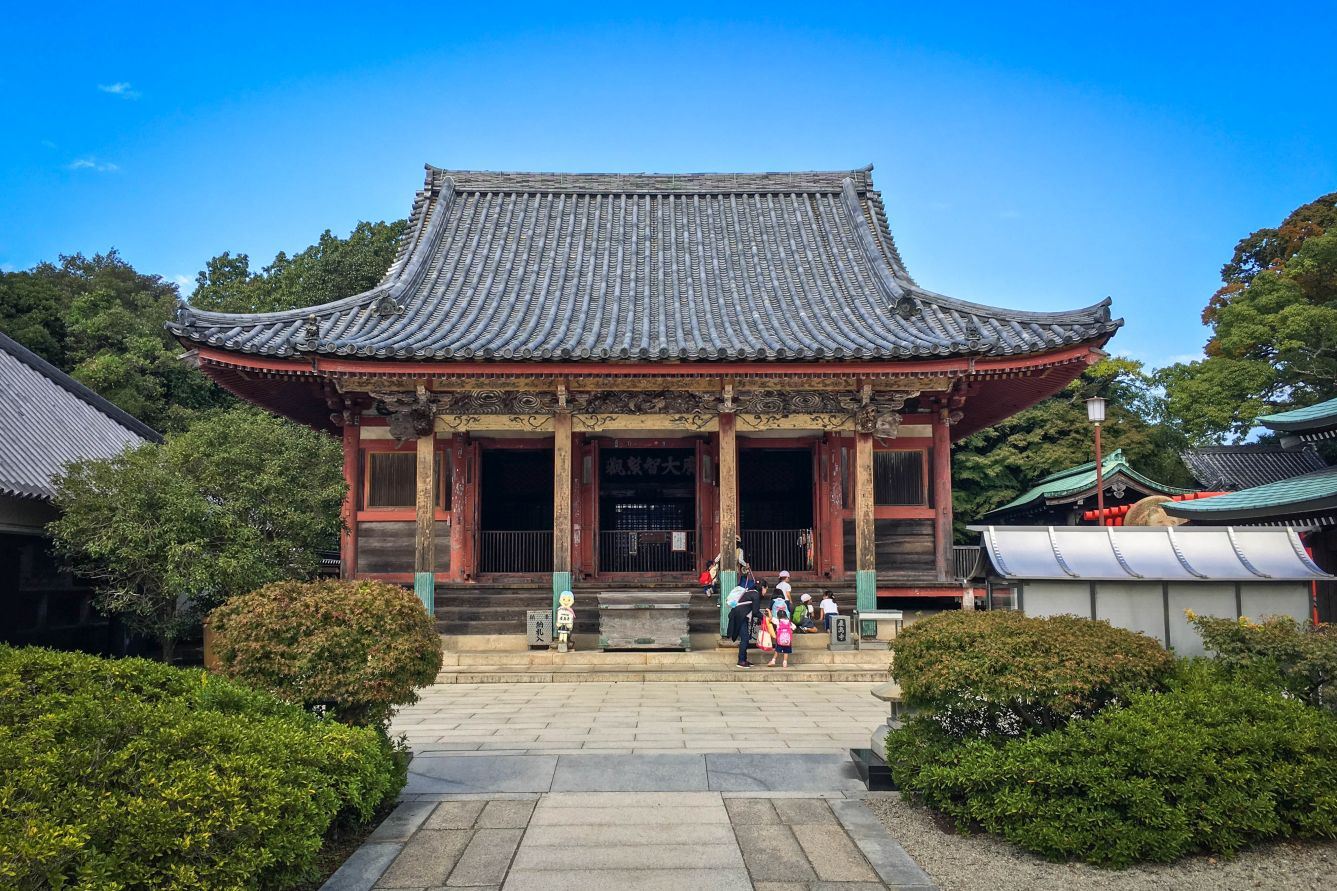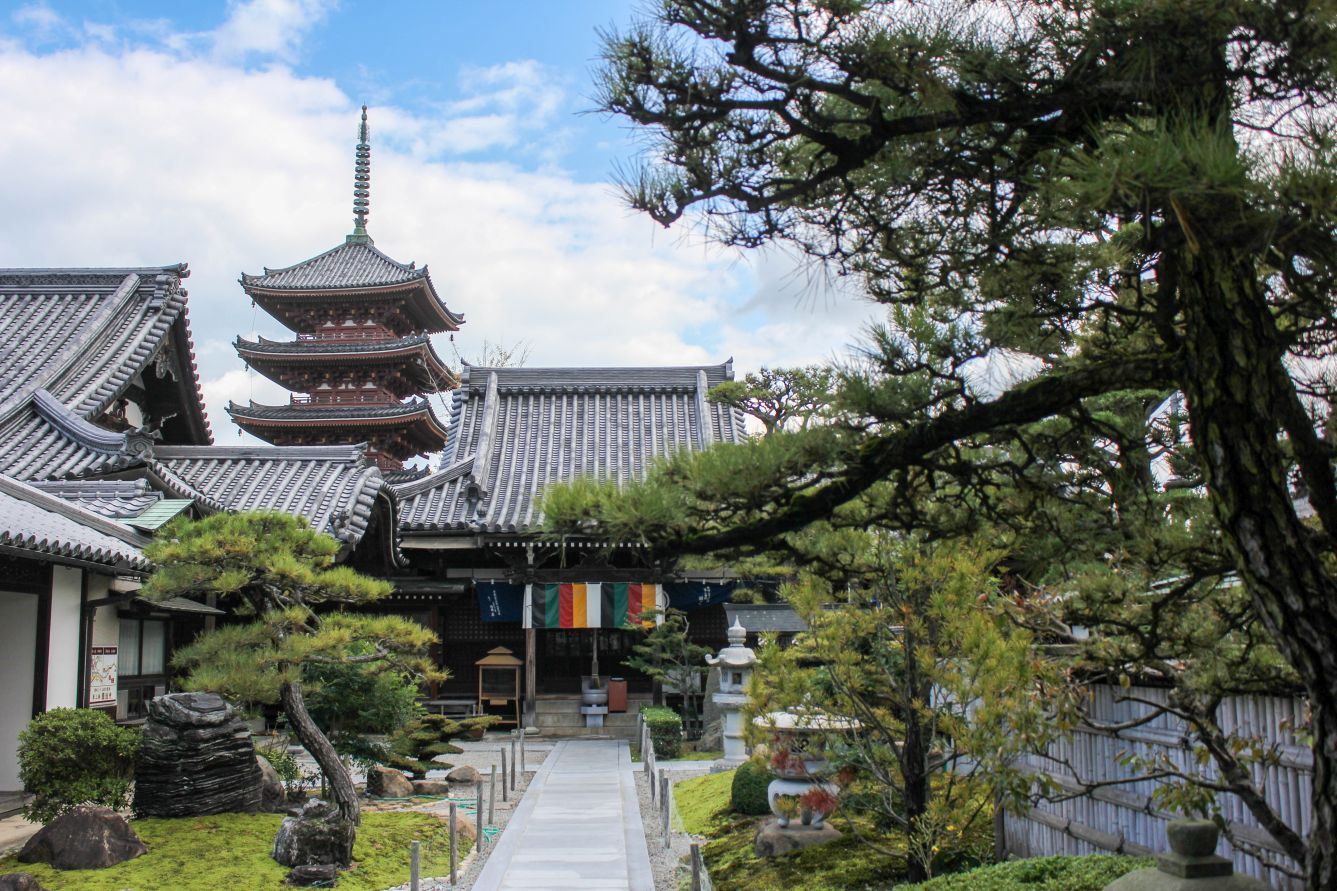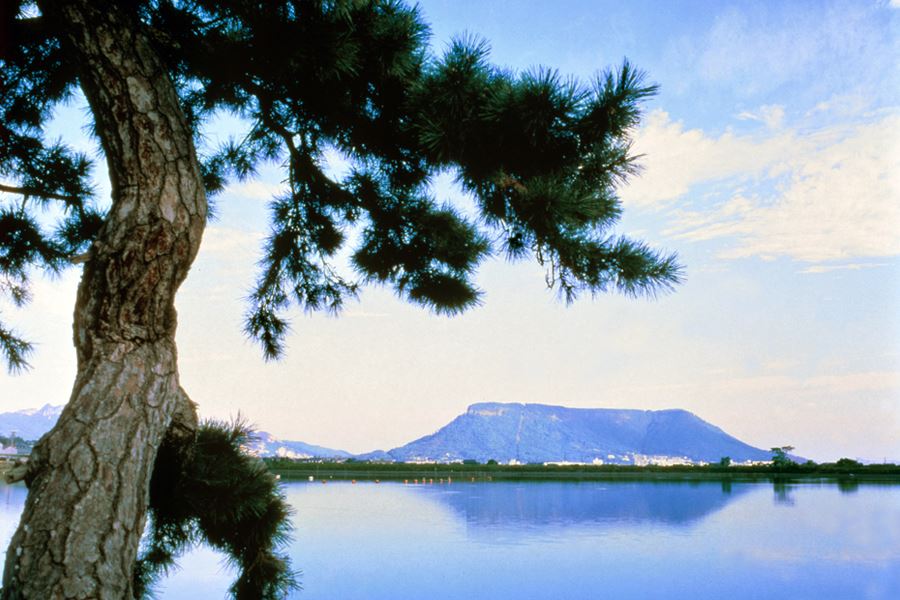Temple 85, Yakuri-ji
Home » Temple 85, Yakuri-ji
Temple 85, Yakuri-ji
Yakuri-ji is temple No. 85 on the Shikoku pilgrimage, or Henro. It’s located high on a mountainside to the east of Yashima. The temple can be accessed on foot using the Henro path, by car, and by cable car. There’s a wealth of things to see at this large temple compound. Yakuri-ji is sacred to Kangiten, the deity of bliss. Kangiten is believed to be beneficial for business prosperity, academic achievement, and marriage, and is consequently worshipped assiduously, bringing in a good income for this prosperous temple.
What to see
Walking pilgrims climb up the mountain from the west. Before the path enters the temple, you come to Sainokawara, the Children’s Limbo, which is said to be the boundary between the human world and the sacred place. In a direct line with the approach to the main hall is a platform with a seated statue of Kūkai called the Welcoming Daishi. This lookout offers a striking view over the Sanuki Plain dotted with the interestingly shaped mountains of Kagawa.
enter from the main gate, which houses colourful statues of deities Jikokuten and Tamonten as guardians. The temple office is the first major building on the left. Next to it is the Shōten Hall, which was built in 1677. A statue of the eleven-faced Kannon stands next to the hall.
The main hall is the largest building facing the main gate on a raised platform. The belfry next to it was built in 1791. In the courtyard before the main hall is a linden tree, which is about fifty years old. The original tree is said to have been planted by Kūkai.
A long flight of steps goes up behind and to the left of the main hall to the Chūjōbō Hall. The hall is dedicated to Chūjōbō, one of the three major tengu of Sanuki. One-toothed geta clogs can be seen at the side of the building.
Proceeding to the right from in front of the main hall, you pass around an outcrop of rock and come to a seated statue of Ikū, a priest in the early Edo period who ate only seeds and grass. Next is a Jizō Hall and the Daishi Hall, and further beyond that is a two-storey pagoda built in 1984. The path continues around with steps up to a collection of statues representing the whole Shikoku pilgrimage. Further round still is a separate, rather luxurious compound housing the head priest’s quarters. You can walk through its grounds, or follow the path round to the left.
If you use the cable car, you come out of the mountaintop station and pass under a torii gate. The head priest’s quarters is ahead of you.
History
Kūkai founded the temple here in 829.
Yakuri-ji was completely destroyed during the invasion of Shikoku, but the main hall was rebuilt in the 1590s. A statue of the deity Kangiten, presented to the temple by Emperor Go-Mizu-no-O who reigned from 1596, is enshrined in the Shōten Hall.
In 1642, the lord of the Takamatsu domain, Matsudaira Yorishige, rebuilt the current main hall and called it Kanjizai-in with Kannon as its principal image. The main gate and main hall were rebuilt by the third feudal lord Matsudaira Yoritoyo in 1709. The great earthquake that caused the eastern peak of Mt. Goken to collapse in 1706 may also have affected the temple.
Legends
When Kūkai trained in the Kokuzo-Gumonji method here, five swords descended from heaven and Zaō Gongen appeared, telling him that this place was a sacred place. Kūkai buried the swords and carved a statue of Dainichi Nyorai in the rock. He named the mountain Mt. Goken (Five Sword Mountain) as a talisman and founded the temple here in 829.
The summit of Mt. Goken had a good view over eight domains that existed at that time, so Kūkai named the temple Hachikoku-ji, The Temple of the Eight Domains. Before he went to China, Kūkai planted eight roasted chestnuts here as a test of the Buddhist power that he sought on the mainland. After returning to Japan, he found that the chestnuts had miraculously grown despite their roasting, and he renamed the temple Yakuri-ji, the Temple of the Eight Chestnuts. (We strongly suspect that this just-so story was invented to cover up a kanji copying error.)
Chūjōbō is a tengu worshiped at the temple. This tengu comes down from the mountain at night, performs good deeds, and returns in the morning. If geta clogs are left beside the hall and they’re found to be dirty the next day, it’s a sign that the tengu was at work.
Information
Name in Japanese: 八栗寺
Pronunciation: yakuri-ji
Address: 3416 Murecho Mure, Takamatsu, Kagawa 761-0121
Related Tours

Experience the most beautiful and interesting temples of the Shikoku Pilgrimage in seven days.

A tour for families or friends, staying in the most characterful kominka and ryokan of Shikoku.

Visit the most beautiful and interesting temples of the Shikoku Pilgrimage and walk the toughest trails.




